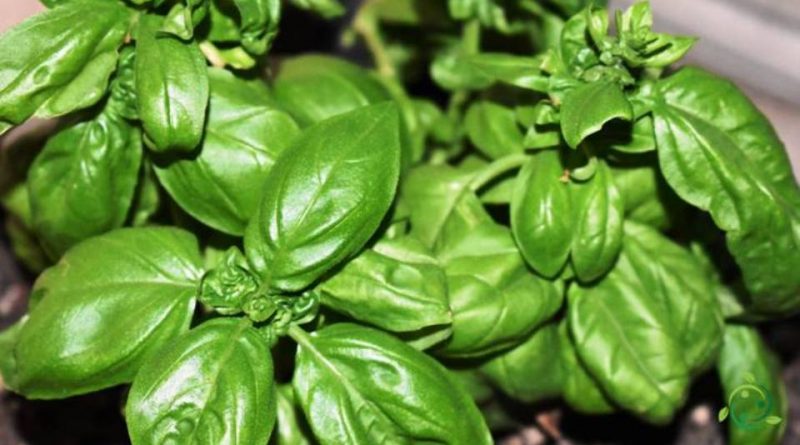How Basil is propagated
How Basil is propagated
Basil (Ocimum basilicum, L., 1753) is an annual aromatic herbaceous plant of the Lamiaceae family, native to India.
Basil is a plant typically used in Italian cuisine and Asian cuisines in Taiwan, Thailand, Vietnam, Cambodia and Laos, due to the marked scent of its leaves, which depending on the variety can be more or less sweet or pungent.
There are many varieties of this plant that differ mainly in size and texture of the leaves and aroma.
Among the different varieties we highlight:
– Ocimum basilicum var. “Cinnamon”: this variety is native to Mexico; it has pink-mauve flowers and purple-brown stems, with leaves ranging in color from olive to green-brown, with shiny, oval, pointed, slightly toothed surfaces, with a very spicy flavor. Excellent with fried foods. The leaves have a cinnamon-like scent;
– Ocimum basilicum var. “Dark Opal”: the flowers have a pink-mauve color, light purple stems, pointed and oval dark purple leaves, with a very spicy flavor;
– Ocimum basilicum var. “Minimum”: also called Greek basil, is a compact bush with small, green, oval and pointed leaves. The little flowers are white. The aroma is of medium intensity. Tolerates colder climates than usual basil;
– Ocimum basilicum var. “Purple Ruffles”: dark red-purple stems, like leaves that are folded along the midrib and have a serrated edge. It can be used like regular basil especially for colorful and aromatic side dishes;
– Ocimum basilicum var. “Crispum”: has large leaves with a rippled surface and an intense aroma; it is used like common basil;
– Ocimum basilicum var. “Anise”: slender basil with dark stems and elliptical to oval leaves, with purple veins and an aniseed scent.
Propagation by seed –
The most common technique for the propagation of basil is that by seed. In this case it is advisable to buy the seeds directly from any specialized dealer or via the internet, or, at the end of flowering, which takes place between June to August, the spikelets that have now gone to seed and store them in a dry and not hot place for next spring, or for sowing in a greenhouse.
In the open field, sowing takes place in March-April and must be done in a protected place in pots or terrines made up of a light substrate. When the seedlings are developed they can be transplanted into larger pots or into full earth in very sunny places. After which it must be watered abundantly and trimmed to favor tillering and too early flowering.
Propagation by cuttings –
Another basil propagation technique is that by cuttings.
In this regard, before proceeding with the preparation of the cuttings, it is necessary to choose a universal fertile substrate that is soft enough to allow further development of the roots of the cutting.
The water we use at the beginning to allow the cuttings to root plays a very important role in this practice.
In fact, it is advisable not to use water from the domestic water supply that has just come out of the tap. If it is difficult for you to obtain chemically safe well water, you can use tap water as long as it has been in a bucket exposed outside the balcony for at least 24 hours; this is to eliminate the excess chlorine often present in drinking water.
At this point it is necessary to take some basil branches from healthy and very robust plants, preferably cultivated with the organic method.
The basil cutting must be prepared with a sprig collected during the day, as the vitality time of the semi-woody twigs is rather short.
At this point, take the water from the tap and let it rest in the open air for 24 hours.
After that, take the sprig of basil and immerse it in a jar filled with the previously prepared water.
It is necessary to wait a few weeks to observe that roots will have sprouted from the terminal area of the branch; at this point the cutting is ready for transplantation. Be careful not to make the roots grow too much because in this case they break or bend more easily with greater rooting problems.
So when the branch has developed its roots, a pot is prepared with fertile and soft soil (universal soil) where to plant the rooted cuttings.
During the first phase, after transplanting, it is advisable to keep the soil constantly moist and not in a sunny position. This operation must be performed daily and therefore dangerous water stagnation must be avoided. Subsequently, the daily irrigations are suspended when the cutting has started to vegetate again.
Among the tips, please note that the fundamental condition for taking root is the temperature: basil pots should be grown when the night temperatures do not drop below 18 ° C.
After taking root, arrange the basil plants in a sunny position. If you used good fertile soil at the time of the first planting, fertilization will not be necessary. On the contrary, if you have used sifted soil from your garden, periodic fertilizations with humus or organic substance will be indispensable.
For the details of the cultivation technique, refer to the following sheet.

